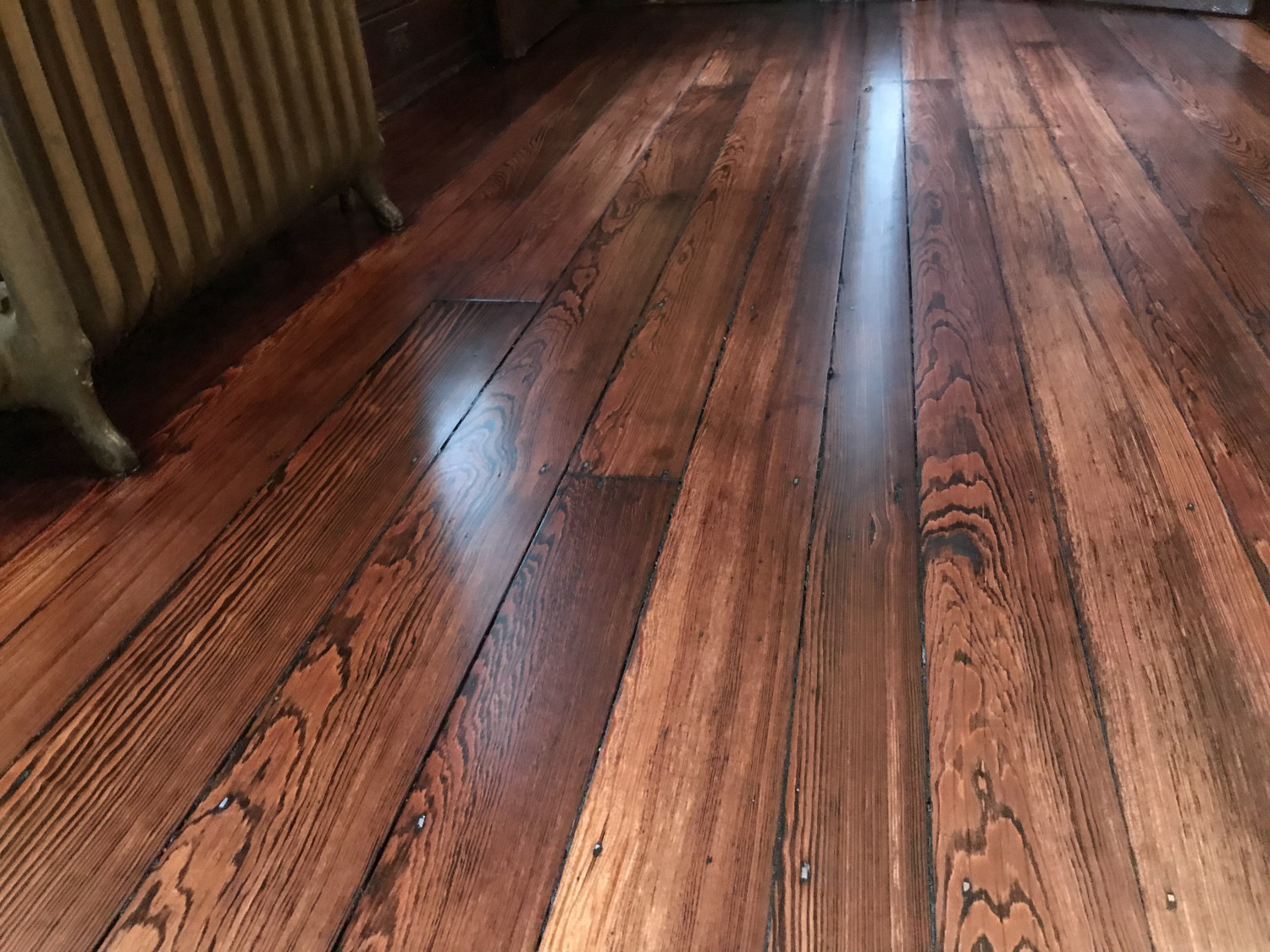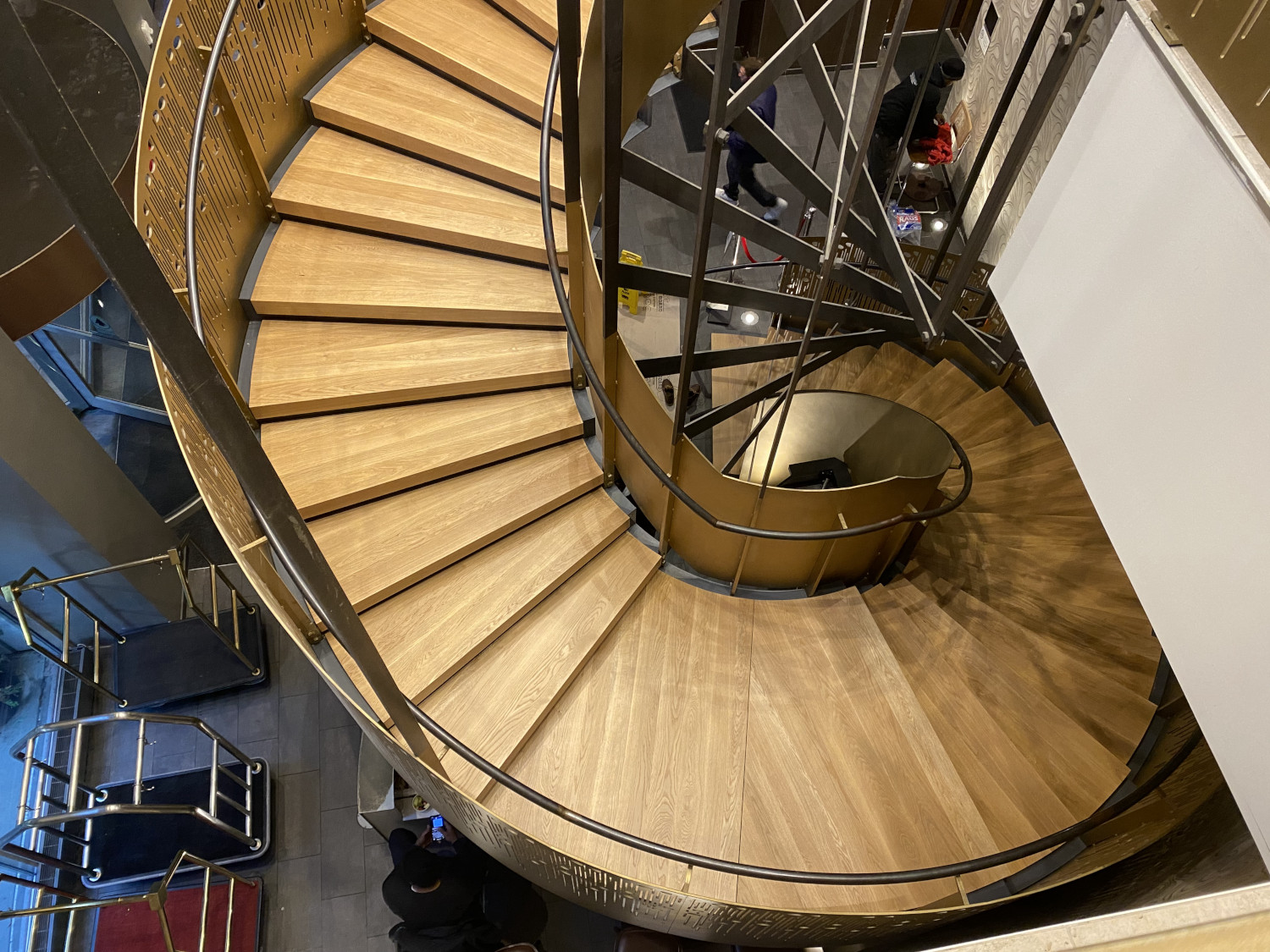How To Mitigate and Treat Pet Damage on Hardwood Floors
There is no denying that our beloved pets bring untold joy into our lives, but for those of us with hardwood flooring, they can also wreak havoc. From accidents and spills to scratches and general wear and tear, pets can truly leave a mark – and we’re not talking about the good kind!
Thankfully, there are proactive measures you can take to minimize pet-related damage and keep your hardwood floors looking beautiful for years to come. Implementing a few simple strategies ensures your home remains a haven for you and your cherished pet.
How Your Pet’s Nails Can Damage Your Wood Floor
Any pet’s nails can damage a hardwood floor, but this is especially true for large dogs. As your pet moves around the home, its long nails act like tiny saws, leaving marks on the finish or even damaging the wood itself.
Here are some ways to mitigate this issue:
- Ensure your pet’s nails are well-trimmed to minimize the damage they can cause.
- Put down carpets or runners in the high-traffic areas of your home, like around doorways or near their feeding area.
- Clean your pet’s paws to prevent grit and dirt from getting on the floor, which can also cause surface damage.
Addressing Wood Floor Moisture Damage from Pets
Pets also threaten hardwood floors with moisture damage. Spills from overflowing water bowls and pet accidents can cause significant problems. Urine left on the floor for too long can discolor the wood, leaving dark stains and a stubborn ammonia odor that can be very difficult and expensive to remove.
The key to minimizing this damage is acting quickly. The faster you clean up spills and accidents, the less chance there is of permanent damage. Absorb urine with paper towels and disinfect the area thoroughly. For lingering odors, baking soda can be a helpful remedy. Sprinkle it on the affected area, leave it overnight to absorb the smell, and then vacuum it up.
For accidents you could not spot quickly, a mixture of one part white vinegar and three parts water can help. It will clean up the urine while reducing the smell in the long term. Another good tool to have in your arsenal is an enzyme-based cleaner. These cleaners can help break down the proteins in the urine, thus reducing any odors.
Unfortunately, if the stain sat for a while and discolored the floor, fixing it will take some more work. You may need to sand the wood in the damaged area and refinish it to remove the stain and the smell. If the moisture has seeped deep into the board and refinishing doesn’t fix it, then you’ll have to replace the impacted planks completely.
Mitigating Wood Floor Moisture Issues Related to Pet Urine
Pets tend to revisit spots they’ve marked with urine. Here’s how to break the cycle:
For cats, maintain a clean litter box with fresh litter. Ensure easy access by placing it in a quiet location. Experts even advise having a box on each floor of your home for multi-level dwellings.
Watch for territorial behavior, a common trigger for spraying or urination around the house. Address territorial instincts to discourage marking.
After accidents, thoroughly clean the soiled area with an enzymatic cleaner to remove lingering odors that might attract your pet back. Temporarily blocking access to the spot can also help prevent repeat offenses.
How To Protect and Repair Your Wood Floors
If you want to protect your hardwood floors from pet damage, consider applying at least a few layers of finish. This will help prevent damage by creating a thicker layer of finish over the wood. When your pet begins scratching, it will only scratch the finish rather than the wood. This is important because repairing the finish is much easier than repairing damaged wood.
If the floor does get damaged, you may be able to repair it yourself if the damage is minor. For damage to the finish, you can simply apply another layer of finish to the damaged area. If the damage is only a small scratch, you may still be able to repair it yourself. You can potentially buff the scratch out by lightly using sandpaper along the grain of the wood.
If the damage does reach the wood underneath, you may be able to repair it by sanding down the plank and resealing it. However, this can be quite a bit of work, so your best bet is to reduce the risk of damage in the first place. One option to help reduce potential damage is to use a firmer, more durable finish on the wood if you know you’ll have pets traveling across it. This will help the floor’s surface withstand the wear and tear caused by pets.
If the damage is too extensive, it might be time to call a wood floor expert for professional hardwood sanding and refinishing. A wood floor professional will consider your pets when resealing, reducing more expensive damage in the future and saving you money in the long run.
When To Call the Hardwood Flooring Experts
While pets will always cause some wear to a floor, being aware of the risks they pose and finding ways to mitigate damage will help you keep your space clean and beautiful. Sometimes, years of pet damage can build up to a degree where you need to call in someone with a high level of wood floor expertise.
In this case, the PA Wood Floor Experts at Artisan Wood Floors can help you decide on the best way to bring your wood floors back to life and protect them for years to come!
Call Artisan Wood Floors today at (215) 515-7355 and ask for Steve!
Recent Hardwood Flooring Projects in Philadelphia & NJ




0 Comments